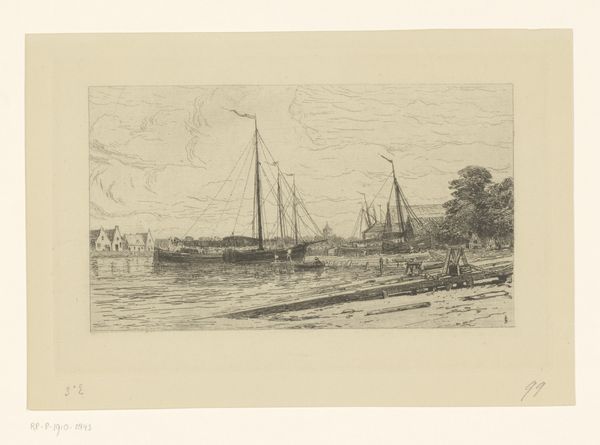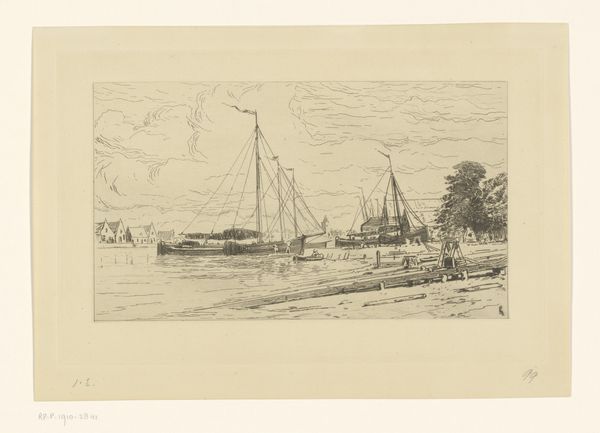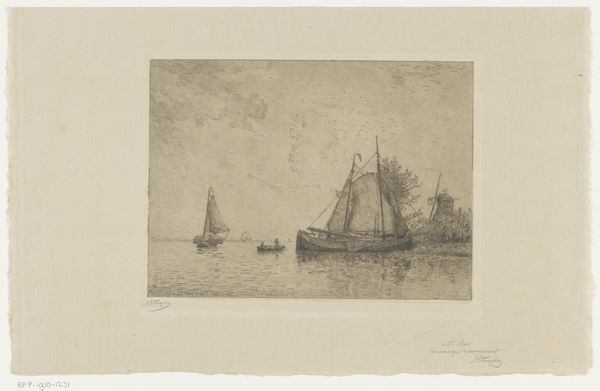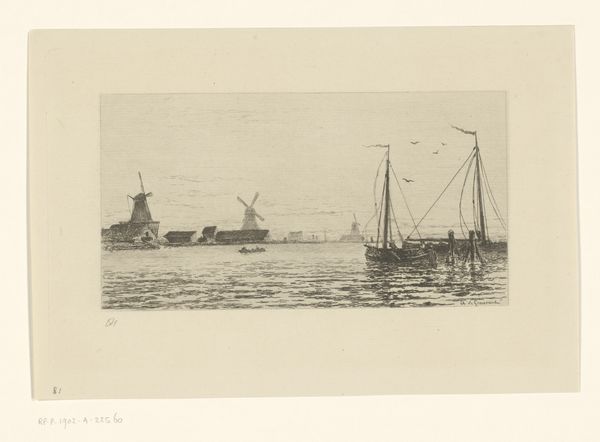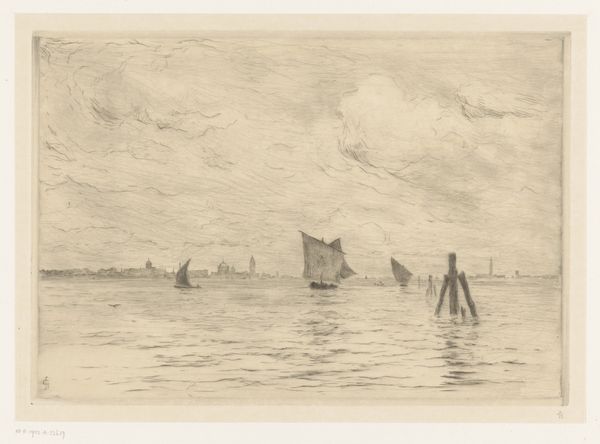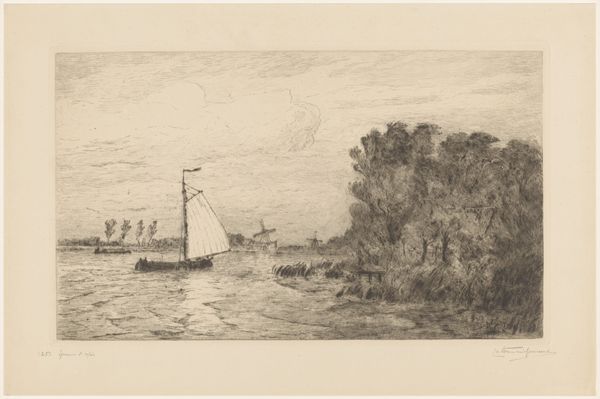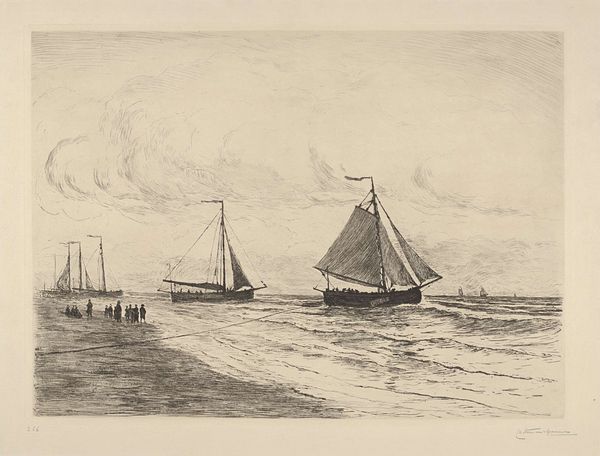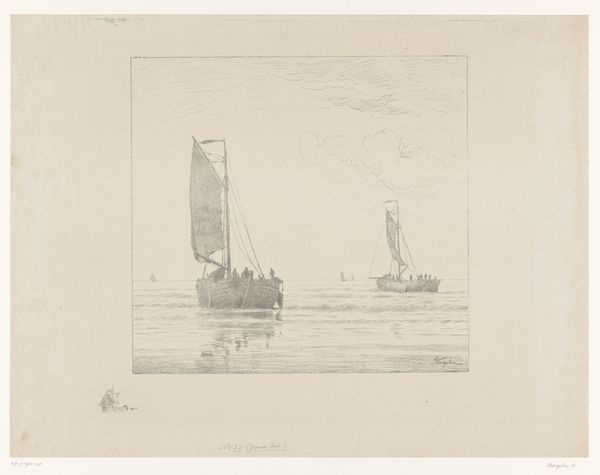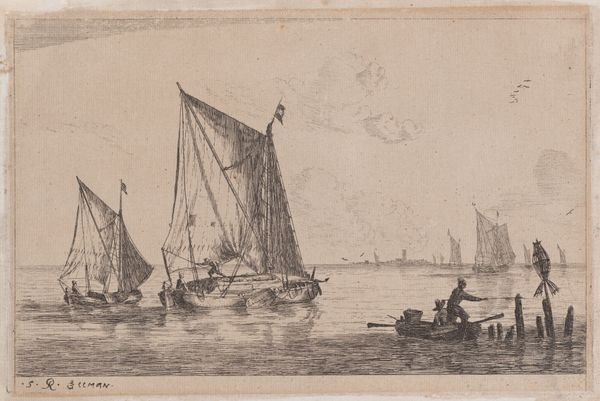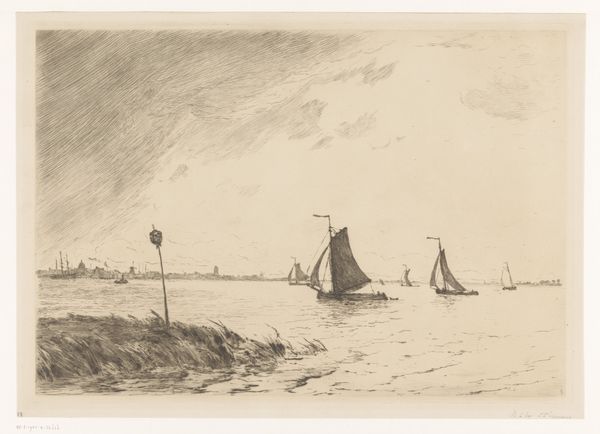
print, etching
#
dutch-golden-age
# print
#
etching
#
landscape
#
line
#
realism
Dimensions: height 175 mm, width 261 mm
Copyright: Rijks Museum: Open Domain
Curator: Before us we have Carel Nicolaas Storm van 's-Gravesande’s etching, “Monding van de Vecht in de Zuiderzee,” created in 1877. It depicts the mouth of the Vecht river as it meets the Zuiderzee, now known as the IJsselmeer, and is currently housed in the Rijksmuseum. Editor: There's a stillness to it, yet I also feel the presence of an approaching squall. The light feels heavy. There's a melancholy mood to this depiction of wind and water; almost like something inevitable is about to unfold. Curator: Yes, Gravesande was very much involved in the Hague School, capturing these everyday scenes of Dutch life, influenced by French realism, while working to develop new techniques for printmaking. What you're reacting to is, in part, the tonal gradations he's managed to achieve here using only line and hatching. Editor: It’s impressive. Beyond just depicting a landscape, those small fishing boats possess an interesting iconic significance in Dutch culture. They often symbolize perseverance and resilience, battling the elements. Curator: They do. And this image really captures how fundamentally linked Dutch identity is to the sea, and to the perpetual project of managing water. Even the etching technique, with its reliance on precise linework, can be seen as analogous to the Dutch dedication to detail in hydraulic engineering and land reclamation. The socio-political drive for land use shaped the public's engagement with coastal imagery, where fishing vessels acquired a powerful role beyond the economic realities of that industry. Editor: Looking closer, that sturdy sailboat feels almost defiant against the implied tempest, suggesting themes of both man against nature, but also community against nature. There's an unspoken understanding of cultural endurance communicated through these nautical images, evoking archetypal seafaring stories deeply ingrained in the collective consciousness of the Dutch people. Curator: Absolutely. And understanding that context, along with his exploration of innovative etching techniques, gives us deeper insight into why Gravesande was such a significant figure in the Dutch art scene. Editor: It’s more than just a picturesque scene, it’s a symbolic tableau. I'll never see a sailboat quite the same way again.
Comments
No comments
Be the first to comment and join the conversation on the ultimate creative platform.


